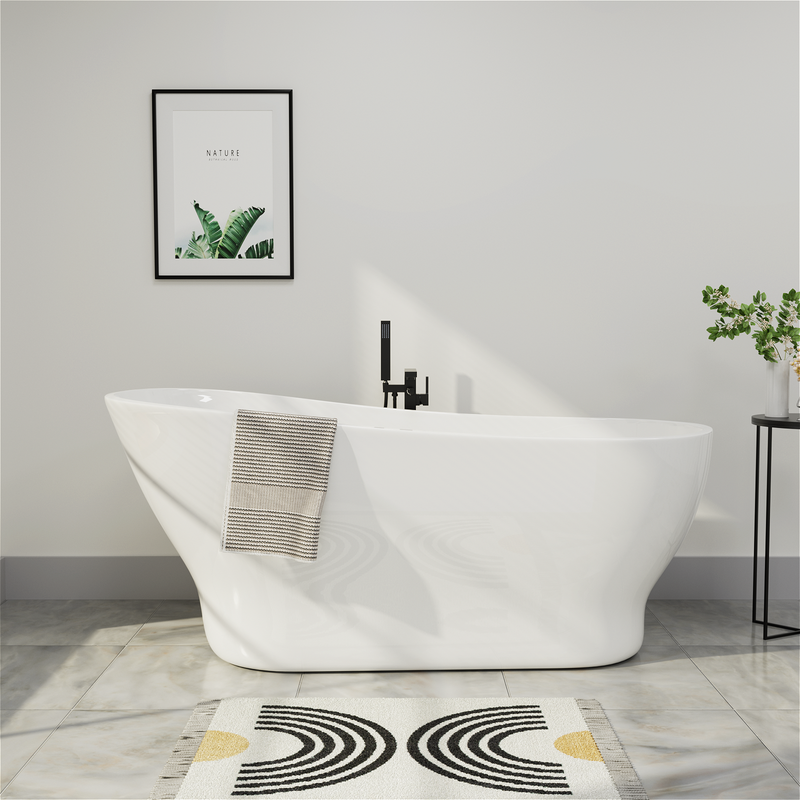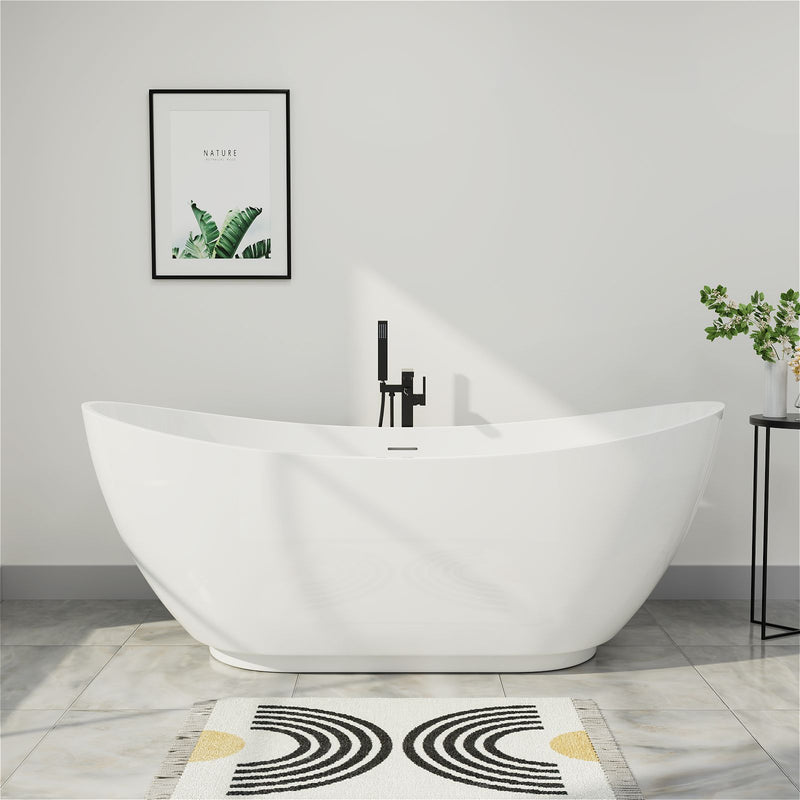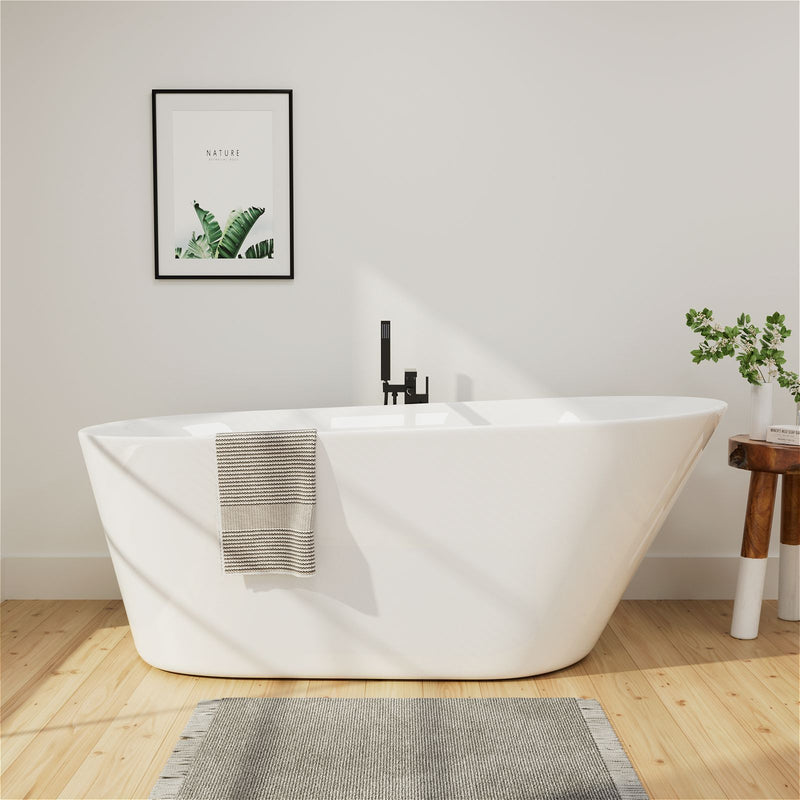Home renovation can be an exciting yet daunting task, especially when it comes to the bathroom. Among the various elements that might need an update, the bathtub often stands out. However, completely replacing a bathtub is a significant undertaking. It involves hefty costs, extensive labor, potential plumbing modifications, and considerable disruption to your daily life. For homeowners seeking a more streamlined and budget-friendly alternative, the acrylic bathtub liner has emerged as a popular solution. This option involves placing a custom-made acrylic shell directly over your existing bathtub, effectively creating a new surface without the mess and expense of a full tear-out. It’s designed to provide a fresh, updated look while addressing minor surface issues like stains, small chips, or outdated color. Understanding how these liners work, their benefits, their limitations, and what the installation entails is crucial for anyone considering this path to a bathroom refresh. This guide will provide a comprehensive overview to help you determine if an acrylic bathtub liner is the right choice for your home.
What Exactly is an Acrylic Bathtub Liner?
An acrylic bathtub liner is a prefabricated shell, typically constructed from sheets of high-gloss acrylic that are vacuum-formed to precisely match the dimensions and shape of a standard existing bathtub. Some liners may also use a composite material with an acrylic surface layer for added rigidity. The process begins with a professional technician taking detailed measurements and templates of your current tub. These specifications are then sent to a manufacturing facility where your unique liner is fabricated. The primary purpose of this liner is to act as a new, slip-in surface that covers the old one. It is not a coating or a spray-on refinish; it is a physical, solid shell that is permanently bonded over the original bathtub using a strong adhesive.
The appeal of this system lies in its simplicity. Instead of breaking apart walls, removing the heavy old tub, and installing a new one—a process that can take days and create a great deal of dust and debris—the liner installation is usually completed within a single day. The acrylic surface is non-porous, which makes it highly resistant to staining and inhibits the growth of mold and mildew. It also provides a smooth, easy-to-clean finish that can modernize the appearance of a bathroom instantly. It's important to note that liners are generally only suitable for standard-sized tubs in good structural condition; they are not a solution for a tub that is cracked, sagging, or otherwise structurally compromised.
The Advantages and Disadvantages
Like any home improvement product, acrylic bathtub liners come with a distinct set of pros and cons that must be carefully weighed before making a decision. The most significant advantage is cost-effectiveness. A liner is almost always less expensive than a full bathtub replacement when you factor in the total cost of a new tub, professional plumbing and installation labor, and the potential cost of repairing surrounding walls and tiles. The second major benefit is speed and convenience. The entire process, from measurement to installation, can often be completed in just a few days, with the actual installation taking only a few hours. This minimizes disruption to your household and allows you to use your bathroom again much faster.
Furthermore, the new acrylic surface offers improved cleanliness and maintenance. The seamless, non-porous finish is far easier to wipe down and keep clean compared to an old, pitted, porcelain, or fiberglass surface that may have accumulated stains and grime over the years. For many homeowners, this easy upkeep is a primary motivating factor.
However, there are notable disadvantages to consider. The most critical one is the potential for hidden moisture damage. Because the liner is installed directly over the old tub, it can trap moisture between the two layers. If the original tub or the surrounding walls had any pre-existing leaks, this moisture will be sealed in, potentially leading to unseen mold growth or wood rot that could worsen over time. A reputable installer will thoroughly inspect the existing tub and walls for any signs of water damage before proceeding.
Another common concern is the fit and finish. While these liners are custom-made, any imperfections in the templating process can result in a less-than-perfect fit. This might lead to gaps, bulges, or a feeling of flex underfoot if the adhesive bond fails in spots over time. Additionally, the installation process is largely irreversible. The strong adhesive used to bond the liner to the old tub is permanent and will likely damage the original surface if the liner is ever removed, making a future full replacement more difficult.
The Professional Installation Process
The installation of an acrylic bathtub liner is not a typical do-it-yourself project. It requires precision, specialized tools, and experience to ensure a proper and long-lasting result. The process begins with a thorough consultation and measurement. A certified installer will visit your home to assess the condition of your existing bathtub and surrounding walls. They will check for any structural issues, leaks, or damage that would make the tub an unsuitable candidate for a liner. Assuming the tub is viable, the technician will then create precise templates of every contour and dimension. These templates are crucial for the factory to manufacture a liner that fits like a glove.
Once the liner arrives at your home, the installation day begins. The first step is a deep and meticulous cleaning of the old bathtub surface. Any soap scum, dirt, or debris must be completely removed to allow for a perfect bond with the adhesive. The installer will then make any necessary adjustments to the plumbing, often by trimming the drain and overflow holes to ensure they align perfectly with the new liner. The next step is the application of a special high-strength adhesive. This adhesive is applied generously to the entire surface of the old tub. The new acrylic liner is then carefully lowered into place and pressed firmly against the original surface.
Pressure is applied systematically across the entire liner to ensure it makes full contact with the adhesive and to push out any potential air bubbles. The installer will use specific tools to secure the liner tightly, especially around the drain and overflow areas. Finally, new plumbing trim is installed, and a bead of 100% silicone caulk is applied around the top edges where the liner meets the wall tiles. This critical seal prevents water from getting behind the liner. The entire process usually takes a few hours, and you are typically advised to wait 24 to 48 hours before using the tub to allow the adhesive to fully cure.
FAQs
Q: How long does an acrylic bathtub liner last?
A: With proper installation and care, a quality acrylic bathtub liner can last 10-15 years or more. Its lifespan is heavily dependent on the quality of the initial installation, the condition of the underlying tub, and how well it is maintained.
Q: Can a liner be installed over any type of existing bathtub?
A: Liners are best suited for standard steel, cast iron, or fiberglass/acrylic tubs that are in sound structural condition. They are not recommended for tubs that are cracked, leaking, flexing, or have significant damage. The existing tub must provide a solid, stable foundation.
Q: Is it possible to repair a liner if it gets damaged?
A: Small scratches can sometimes be polished out with a specialized acrylic polish. However, deeper cracks or holes are very difficult to repair effectively. In most cases, significant damage would require the entire liner to be replaced.
Q: Will the liner change the feel or depth of my bathtub?
A: Yes, but usually only slightly. The liner does add a new layer of material, which can marginally reduce the interior length, width, and depth of the bathing well. For most people, this change is negligible, but it is something to be aware of.
Q: How do I clean and maintain an acrylic liner?
A: Maintenance is simple. Clean it regularly with a soft cloth or sponge and a mild, non-abrasive cleaner or dish soap. Avoid harsh abrasive cleaners, scouring pads, or acidic chemicals, as these can scratch and dull the glossy acrylic surface.
Q: What is the biggest risk associated with choosing a liner?
A: The biggest risk is the potential for hidden moisture and mold growth between the liner and the old tub if there was a pre-existing leak that went undetected during the inspection phase. This is why a thorough pre-installation inspection by a reputable and honest company is absolutely essential.
Conclusion
The acrylic bathtub liner presents a compelling option for homeowners looking to rejuvenate their bathroom without the high cost and major disruption of a full tub replacement. It offers a swift transformation, delivering a glossy, new, and easy-to-clean surface in a matter of hours. Its success, however, is almost entirely dependent on two factors: the condition of the existing bathtub and the skill of the installer. It is not a solution for a failing or damaged tub, but rather a cosmetic upgrade for a sound one. For those with a structurally solid but aesthetically dated bathtub, a professionally installed acrylic liner can be a cost-effective and convenient way to achieve a like-new look and enjoy years of easy maintenance. As with any significant home improvement decision, conducting thorough research, obtaining multiple quotes, and choosing an experienced, reputable installer with strong warranties are the best steps to ensure a successful outcome and a beautiful, long-lasting bathtub.





